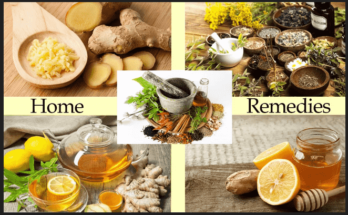Introduction To 10 Warning Signs Of Mold Toxicity:
Understanding the warning signs of mold toxicity is crucial for safeguarding your health.
This comprehensive guide will delve into the 10 key indicators, providing insights into understanding allergic reactions, causes, and essential precautions.
Understanding Mold Toxicity
Gain insights into the nature of mold toxicity and its potential impact on health.
Definition of Mold Toxicity
Define mold toxicity and its implications for human health, emphasizing the importance of awareness and prevention.
Health Risks and Complications
Explore mold toxicity’s health risks and complications, including respiratory ailments, allergic reactions, and immune system disorders.
Recognizing Warning Signs
Visible Mold Growth
Identify visible signs of mold growth in indoor environments, such as walls, ceilings, and hidden corners.
Musty Odor
Recognize the distinctive musty odor often associated with mold infestations, signaling potential health hazards.
Respiratory Symptoms
Understand common respiratory symptoms of mold exposure, including coughing, wheezing, and shortness of breath.
Skin Irritation
Learn about skin irritations and allergic reactions triggered by contact with mold spores, manifesting as rashes, itching, and redness.
Persistent Headaches
Explore how mold exposure can contribute to persistent headaches and migraines, often overlooked as potential warning signs.
Fatigue and Weakness
Understand how mold toxicity may lead to fatigue, weakness, and lethargy, impacting daily energy levels and overall well-being.
Sinus Congestion
Recognize symptoms of sinus congestion and nasal discomfort associated with mold exposure, exacerbating respiratory issues.
Eye Irritation
Identify common eye irritations caused by mold spores, including redness, itching, and watery eyes.
Neurological Symptoms
Explore potential neurological symptoms of mold toxicity, such as memory problems, difficulty concentrating, and mood swings.
Digestive Issues
Understand how mold exposure can affect digestive health, leading to symptoms such as nausea, diarrhea, and abdominal pain.
Causes of Mold Toxicity
Moisture and Humidity
Examine the role of moisture and humidity in mold growth, highlighting the importance of proper ventilation and moisture control.
Water Damage
Understand how water damage, such as leaks and floods, can create conducive environments for mold growth and toxicity.
Poor Ventilation
Explore the impact of poor ventilation on indoor air quality and mold proliferation, emphasizing the need for adequate airflow.
Organic Material
Learn how organic materials, such as wood, paper, and fabric, serve as nutrient sources for mold growth, necessitating vigilant maintenance.
Precautions Against Mold Toxicity
Routine Inspection and Maintenance
Emphasize the importance of routine inspection and maintenance to promptly identify and address mold issues.
Effective Moisture Control
Highlight strategies for effective moisture control, including repairing leaks, using dehumidifiers, and promoting proper ventilation.
Regular Cleaning
Encourage regular cleaning practices to remove mold spores and prevent their accumulation on surfaces and in the air.
Proper Hygiene
Stress the significance of personal hygiene, such as washing hands and clothes after potential mold exposure, to mitigate health risks.
Use of Protective Gear
Recommend using protective gear, such as masks and gloves, when dealing with mold-infested areas to minimize direct exposure.
Professional Remediation
Advocate for professional mold remediation services when faced with extensive mold infestations or persistent health symptoms.
Conclusion
In conclusion, recognizing the warning signs of mold toxicity is essential for protecting yourself and your loved ones from potential health risks.
By understanding these indicators and taking proactive measures, you can create a healthier indoor environment and minimize the adverse effects of mold exposure.
FAQs (Frequently Asked Questions)
Q: Can mold toxicity cause long-term health problems?
A: Yes, prolonged exposure to mold toxicity can lead to chronic health issues, including respiratory ailments, neurological disorders, and immune system dysregulation.
Q: How can I test for mold in my home?
A: You can test mold using DIY kits or hire professional mold inspectors to assess indoor air quality comprehensively.
Q: Are specific individuals more susceptible to mold toxicity?
A: Yes, individuals with pre-existing respiratory conditions, allergies, or compromised immune systems may be more susceptible to the adverse effects of mold toxicity.
Q: What should I do if I suspect mold in my home?
A: If you suspect mold growth in your home, conduct a thorough inspection, address moisture issues promptly, and consider seeking professional assistance for remediation.
Q: Are there natural remedies for mold removal?
A: While some natural remedies like vinegar and baking soda may help remove surface mold, professional remediation is often necessary for extensive infestations.
Q: How can I prevent mold growth in my home?
A: To prevent mold growth, maintain proper ventilation, control indoor humidity levels, address water leaks promptly, and keep indoor spaces clean and dry.
- The Importance of Quality Uniforms in the Workplace
- Best Rakhi Gift Ideas for Your Music Lover Brother

- Exploring the Best Vegan Makeup Brands: A Guide to Ethical Beauty

- Áo Bida Thiết Kế: Sự Kết Hợp Hoàn Hảo Giữa Bida và Thời Trang
- Environmental Impacts of Fast Fashion

- The Modern Lifestyle: A Comprehensive Exploration






